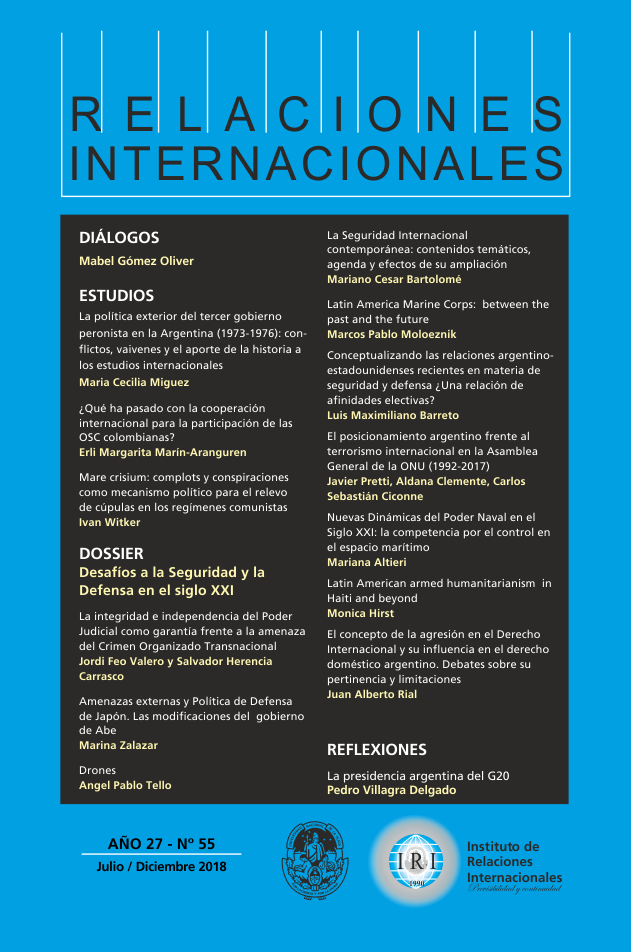Latin American armed humanitarianism in Haiti and beyond
DOI:
https://doi.org/10.24215/23142766e048Abstract
MINUSTAH represents a benchmark in the link between global securitization and humanitarian practices in Latin America and the Caribbean. Regional military responsibilities in Haiti turned useful to improve and expand capabilities employed in international humanitarian crisis. Engagement in natural disaster has been the dominating terrain in which military humanitarian action takes place in Latin America and the Caribbean. Military presence in Haiti has also contributed for experimentation in the fight against organized crime and gangs, a growing concern on the radar of international humanitarian organizations and actors. Armed humanitarianism in the region has benefitted from ties with the US, particularly the South Command, and with the UN System, particularly the DPKO. Domestic and international involvement in humanitarian assistance has become major topic in regional intra-military initiatives, stimulated by exchange of new expertise and the expansion of teamwork programs. Simultaneously, armed humanitarianism has amplified the spectrum of civil-military relations by broadening interaction with local population and organizations in different parts of Latin America and the Caribbean. Yet, armed humanitarian is controversial in the region in face of its implication for human rights protection and the strength of democratic institutions. This text intends to trace a middle ground around military and humanitarian studies conceptualization by interlacing the concepts of postmodern military and armed humanitarianism. It parts from the assumption that both concepts, while focusing on different objects, may knit well to explain post-MINUSTAH Latin American military developments.
Downloads
Downloads
Published
How to Cite
Issue
Section
License
Aquellos autores/as que tengan publicaciones con esta revista, aceptan los términos siguientes:
- Los autores/as conservarán sus derechos de autor y garantizarán a la revista el derecho de primera publicación de su obra. A partir de noviembre del 2020 los artículos se publicarán en la revista bajo una licencia Creative Commons Atribución- NoComercial-CompartirIgual 4.0 Internacional (CC BY-NC-SA 4.0). Acorde a estos términos, el material se puede compartir (copiar y redistribuir en cualquier medio o formato) y adaptar (remezclar, transformar y crear a partir del material otra obra), siempre que a) se cite la autoría y la fuente original de su publicación (revista y URL de la obra), b) no se use para fines comerciales y c) se mantengan los mismos términos de la licencia.
Previo a esta fecha los artículos se publicaron en la revista bajo una Licencia de reconocimiento de Creative Commons (BY-SA 2.5). - Los autores/as podrán adoptar otros acuerdos de licencia no exclusiva de distribución de la versión de la obra publicada (p. ej.: depositarla en un archivo telemático institucional o publicarla en un volumen monográfico) siempre que se indique la publicación inicial en esta revista.
- Se permite y recomienda a los autores/as difundir su obra a través de Internet (p. ej.: en archivos telemáticos institucionales o en su página web) antes y durante el proceso de envío, lo cual puede producir intercambios interesantes y aumentar las citas de la obra publicada. (Véase El efecto del acceso abierto).


























